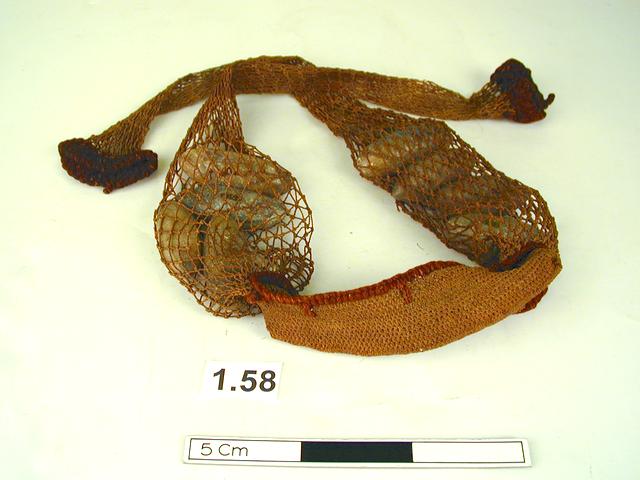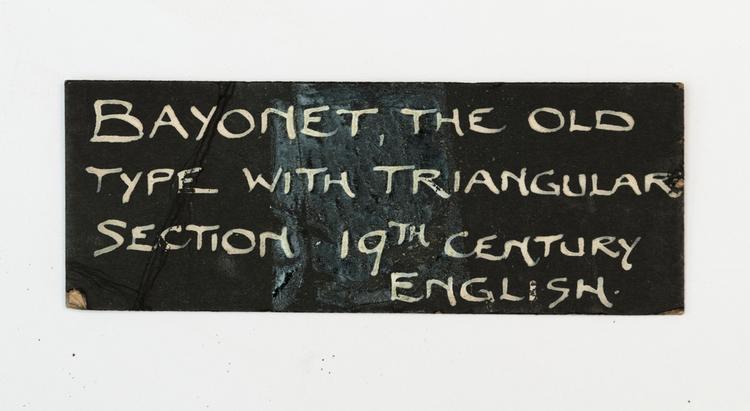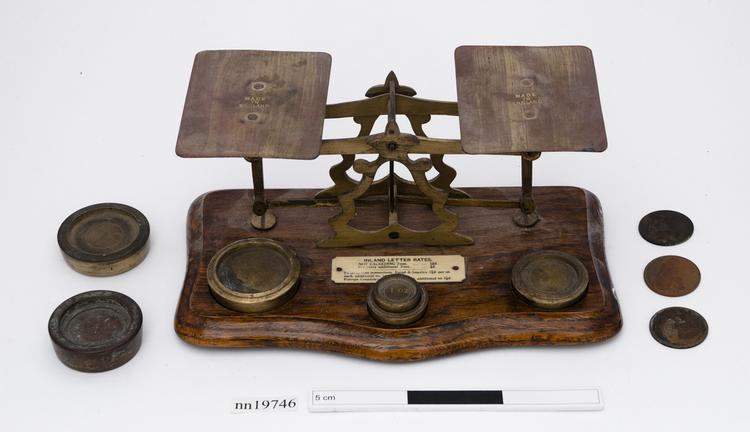
Sling with woven textile pouch of brown colour edged in dark red. The fishnet straps contain 8 stones.
Sling with Integrated Carrying Pouches for Slingstones, New Caledonia, Southern Melanesia. Slings are often overlooked as weapons, and yet they were the most similar weapon to firearms until the invention of the pellet-bow in the Middle Ages. The speed of a slingstone in flight is comparable to an arrow or the kind of low-velocity bullets fired by early European muskets. The main disadvantage of the sling lay in the length of time required to get the stone spinning at speed, but in places where bows were either absent or unreliable, they were immensely useful. They did require, however, that the slinger be skilful enough to aim the stone where they wanted it. In New Caledonia, men primarily used slings for hunting, and practiced with the weapon from childhood onwards. New Caledonian slings were generally plaited from Pandanus leaf strips, while this example appears to be woven from bark-fibre string from a species of fig tree. This is an intriguing and useful object, being a weapon, garment and ammunition container all rolled into one. We can see that these slingstones were painstakingly ground down to come to two conical points. Highly skilled slingers could launch the stone with a spin that gave it greater accuracy and range, just like the spiral grooves on the inside of a rifle barrel. Eyewitness accounts of New Caledonian men hunting sleeping flying foxes (Pteropus spp.) during the mid-19th Century make the Old Testament accounts of this weapon seem more plausible than they might at first read: at a distance of 60 m, these New Caledonia slingers could hit three targets for every five stones launched, and kill them outright. Although it had a very strong flavour, the Flying Fox was a valued meat animal for many Melanesian peoples, and the New Caledonians also spun an attractive red wool from its fur. This can be seen fringing the sling here. Stone, bark-fibre string, flying fox fur. Late 19th Century. Formerly in the private collection of Mr. H. B. Montefiore.
fighting


































































































































































































































































































































































































































































































































